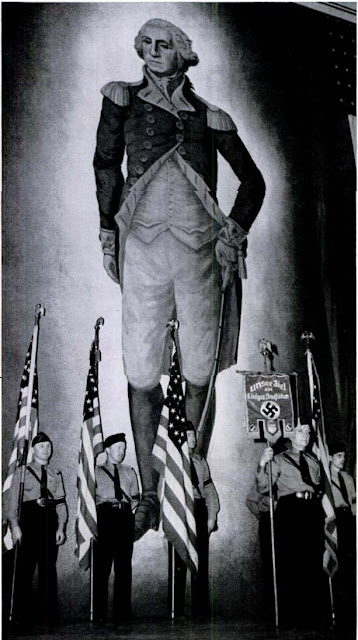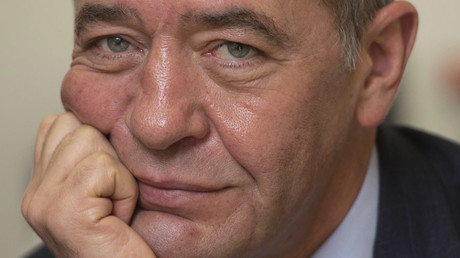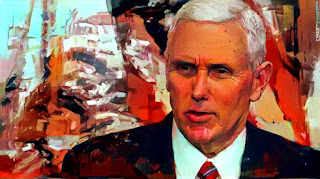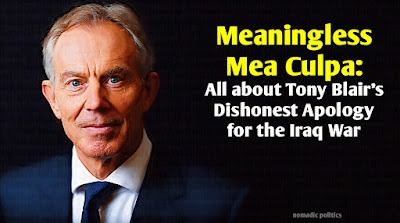It is the summer of 1917 and the place is
East St. Louis.
For the black laborer, the conditions in the Deep South, with its
Jim Crow laws and the prevailing atmosphere of oppression, offered very little enticement to stay. Despite federal laws which were supposed to provide equal protection and due process, the African American in the South at that time was considered a second-class citizen.
As one source points out, all Southern states had some form of Jim Crow laws. Segregation was a way of life for black in the South, affecting every social activity, not merely schools, but also in restaurants, theaters, parks, and hospitals. All these restrictions were held in place by a justice system that favored the white race in every way. And when injustice was challenged, the
KKK was on hand to provide the intimidation to keep the "coloreds" in line.
It was a time of great demographic changes. Around 1910, African Americans had constituted more than half the population of South Carolina and Mississippi, and more than 40 percent in Georgia, Alabama, Texas, and Louisiana. The Black exodus had rendered the South essentially without a labor force. In the North, cities that once been virtually all white at the turn of the century now became centers of urban black culture.
Factories in the North offered great opportunities for men willing to work, especially in 1917 with America about to enter the World War. Between the years 1916 through 1918, an estimated 400,000 African Americans left the South in to take advantage of a labor shortage in the wake of the First World War.
During that spring, African Americans from the South were moving to St. Louis at the rate of 2,000 a week. And this influx presented the Northern manufacturers an ultra-cheap source of labor. That was to prove to be an excellent bargaining chip against unhappy union workers.
At the same time, workers unions were embroiled in labor disputes not only in the US but globally. Among the demands, workers were attempting to establish a fair wage, the right to collective bargaining, an eight-hour work day, increased worker safety and job security. Across the nation, unions were attempting to assert their dominance over industry.
With wartime demands for industrial production increased, the timing for workers couldn't have been any better. If industrialists were going to get rich, then workers believed that they had every right to demand their own share. Added to that, union leaders understood that conscription for military service was bound to create a shortage of civilian manpower. The time to seize the moment was now.
For the corporation owner, therefore, the black migration -cheap labor that would accept whatever conditions and at whatever wages that company owners offered- was one sure way that they could break the power of the largely white unions. since the Industrial revolution began the one tactic that has long become fool-proof is to pit worker against worker. In the 1917 case, the plan was to pit white union labor and black easily-exploitable labor.
When 470 African American workers were hired to replace striking white workers at the Aluminum Ore Company in East St. Louis, the stage was set for a war between the races. The strike. which included, at least, half of the company's workforce, had already gone on for several weeks.
It was one of a series of labor actions in the area that had weakened the power of the unions. These companies were now in the power position and felt no need to arbitrate.
The hatred for corrupt management and greedy company owners swiftly turned into racial hatred for the black "scabs."
That discord was,
historians have noted, largely stirred up by management that was in no mood to negotiate. Government orders meant profits and these dangerous combined factors would soon erupt into all-out calamity.
The book,
Power, Community, and Racial Killing in East St. Louis, author
Malcolm McLaughlin. points to the tactics (along with collaboration with local government) as the chief factor for the racial violence to come. The war allowed the industrialists to identify their own interests with the interests of the nation at war. Striking workers were portrayed as un-American. Any tactic to break the strike was considered fair.
The company had also, McLaughlin also notes, employed professional strikebreakers, armies of thugs and armed them with secretly-obtained US government issued rifles. The company had apparently received the rifles from a local gun club set up by
Estes Sorrell, the secretary of the Chamber of Commerce. McLaughlin speculates that the club was
specifically intended as a means of gun running since the rifles appeared at the Aluminum Ore plant, packed and ungreased.
Rumblings Before the Eruption
Tensions were reaching a breaking point. On May 10, union leaders warned local government that something had to be done about the black workers taking white jobs. They threatened to take action themselves if nothing was done.
Eventually, on May 28th, 1917- just weeks after America had entered the war, the spark caught fire and the race riots of East St. Louis exploded. Formal complaints about black workers were lodged with the Mayor of East St. Louis Fred Mollman by furious whites.
A month earlier Mayor Mollman had won re-election on a promise to clean up the city. He had also assured black voters that black police officers would be hired and a new firehouse would be built for black neighborhoods. White voters were also furious when Mollman threw a post-election party with hundreds of black supporters.
The mayor assured the angry white crowd that he had a plan to handle the Negro problem. However the remarks of another speaker, a white lawyer, that struck an ominous note. He told the crowd that "there's is no law against mob violence."
It was exactly the wrong thing to say and the worst message to give.
Immediately after the meetings, with passions running high, a rumor was circulated about a white man being robbed by an armed African-American. Mobs of angry white civilians gather and set off a rampage through the downtown, assaulting all blacks they could find. African Americans were pulled off trolleys and beaten on the street.
Critics claimed that the police were more interested in disarming the black residents instead of protecting lives and property.
This violent episode was brought to an end only when Illinois governor Frank Lowden called out the National Guard to restore calm.
Had the governor followed up with a thorough investigation and prosecution of transgressors along with preventative measures, the situation could have been resolved.
However, in the month that followed, the riot was all but forgotten while the simpering underlying causes remained. As one source notes:
No precautions were taken to ensure white job security or to grant union recognition. This further increased the already-high level of hostilities towards African Americans. No reforms were made in police force which did little to quell the violence in May.
When Governor Lowden ordered the National Guard out of the city on June 10th, the black residents of the city faced the situation alone.
During this time, the strike was officially called off two weeks later, all that was left of the labor action was a bitter resentment that demanded its expression in violence.

The Slaughter of the Innocents
On July 2, 1917, an automobile driven by white males passing through a black neighborhood, firing shots at African Americans.
Not long afterward, black residents mistook another car carrying a journalist and two police officers for the same attackers and fired shot at the passing vehicle, killing both police.
Later that day, thousands of white residents gathered on the scene to view the blood-stained auto. The crowds then turned and marched into the black parts of town, reportedly beating any African American they found along the way - including women and children.
Professor Elliot Rudwick's 1964 book Race Riot at East St. Louis, July 2, 1917, provides an insight to the terrible night. After cutting fire department water hoses, white rioters torched entire black neighborhoods of the city and shot at residents as they attempted to escape.
Several innocent African Americans were lynched by the mobs.
Guardsmen were called in but accounts exist that they joined in the rioting rather than stopping it. More joined in, including allegedly "ten or fifteen young girls about 18 years old, [who] chased a negro woman at the Relay Depot at about 5 o'clock. The girls were brandishing clubs and calling upon the men to kill the woman."
Some unverified reports claimed that "black women were stripped by white women for the amusement of the crowd."
Troops were ordered not to shoot rioters and a number of rifles were stolen from the soldiers. When squads of soldiers were sent out to round up firearms, it was clear that both sides were well-armed.
One Col. S. O. Tripp of the Illinois Guard came out as a hero of the hour when he rescued an elderly black man from a lynching party of hundreds. The black man, with a rope around his neck, was being dragged through a street by more than a hundred men. Col. Tripp forced his way through the crowd and demanded the crowd release the man.
Such acts of heroism were not common and later, as the details emerged, the actions of National Guard on that night would seem anything but heroic.
According to one account at the time, African Americans were "being shot down like rabbits" and hanged to telegraph poles in the south end of the town. Other reliable reports counted nineteen black corpses on a side street.
Throughout the night of July 2, the atrocities against black Americans continued despite the presence of patrolling Guardsmen. In addition, high winds spread the flames engulfing three different parts of the city.
In the early hours of the following morning, leaders of the black community gathered together to make an appeal directly to President Wilson and to the Illinois governor. They demanded increased security for the black population under mortal threat. The total number of Guardsmen was 1.500, but officials conceded that that number would not be enough to restore order.
Estimates of the number of dead varied widely from 25 to 250. At 9:30 o'clock 24 bodies had been recovered, including three whites, 74 wounded negros were found.
Estimate of the bodies supposed to lie under the acres of ashes and smouldering debris, where fires consumed hundreds of negro shacks and house last night run into the hundreds.
Keeping Out of Sight
The morning brought some degree of calm to the city. Exhausted Guardsmen patrolled the streets while many black residents driven from their homes huddled together "seemingly anxious to keep out of sight."

Six thousand blacks were left homeless and five hundred men women and children had been forced to spend the night in the city jail. presumably, the only place that would provide any degree of security.
Otherwise. said the reporter, the city appeared normal. There were broken windows here and there, other wreckage and the breeze carried the acrid smell of water-soaked embers.
The National Association for the Advancement of Colored People (NAACP) dispatched two representatives, W.E.B. DuBois, and Martha Gruening, to investigate the events. Silent marches of 10,000 were held in New York City in silent protests for what black leaders were calling a "massacre."
In the days after the event, there was a national outcry for those responsible to held to account. including the police commission and other government officials. Closer to home, however, it was a different story.
In the days following the riots, the city's whites exhibited little regret. Many toured downtown, which buzzed with a mardi-gras environment, showing off mementos that they had gathered during the unrest (mainly pieces of clothing from dead bodies). They also blamed their black neighbors for the July 2 disturbance.
Collins also points out that when justice finally came, it was the based on a surreal version of impartiality.
A grand jury eventually handed down indictments to 134 people, about one-third of them black. Most of the whites paid a small fine or spent a few days in jail. Six substantial trials stemmed from the riot- four involving whites and two blacks. Nine whites and twelve blacks served time in prison.
The Garvey Indictment
His words were unambiguous calling what had taken place as "one of the bloodiest outrages against mankind for which any class of people could be held guilty."
It was, he said, "no time for fine words, but a time to lift one's voice against the savagery of a people who claim to be the dispensers of democracy."
“This is a crime against the laws of humanity; it is a crime against the laws of the nation, it is a crime against Nature, and a crime against the God of all mankind.”
He did not blame just the individuals involved, but Garvey indicted the entire system:
For three hundred years the Negroes of America have given their life blood to make the Republic the first among the nations of the world, and all along this time there has never been even one year of justice but on the contrary a continuous round of oppression.
Quoting Acts 17:26, Garvey said that God has created "of one blood all nations of men to dwell on the face of the earth." Yet, it was the white race that was determined "to enslave, conquer and rob the rights of the Peaceful."
Through that system of enslavement, conquest and robbery, the black man was taken into this country where he was forced against his will to labor for the enrichment of the white man. Millions of our people in the early days of slavery gave their lives that America might live. From the labours of these people the country grew in power, until her wealth to-day is computed above that of any two nations.
In spite of this inarguable contribution to the American success story, the Negro race was still "a despised creature in the eye of the white people." How else can the massacre in East St.Louis be explained?
"The white man," Garvey told the crowd, "has never found it convenient to live up to the principles of brotherhood which he himself teaches to all mankind."
In that speech, Garvey also outlined a conspiracy against African Americans who had abandoned the brutal oppression of the South in a bid for their fair share of prosperity and a better life in the North. He took direct aim at East St. Louis Mayor Mollman.
"I am convinced that he fostered a well arranged conspiracy to prevent black men migrating from the South much the loss of Southern Farmers who for months have been moving heaven it seems to prevent the exodus of the labor serfs of the South into the North."
He accused Mollman of doing "absolutely nothing to let the people know that the law would be enforced to preserve order and ensure the peaceful lives of the black people."
The authorities instead of attempting to keep law and order had simply stood by and watched.
We have a police department that is incompetent and inefficient if not worse. Not only was the word sent out that law would not be rigidly enforced but the impression was allowed to spread that law violations would be winked at."
There were reports, Garvey said, that the East St. Louis mayor had been contacted by representatives from the South to see what could be done about the black migration.
As proof of the conspiracy, Garvey also cited a message from Legislature of Georgia that "their good Negroes must come home as they will treat them better than East St. Louis did."
In one day, Garvey said, the mayor of East St. Louis succeeded in driving out a black population in fear of their lives in the face of a white mob. he promised that he would do all he could to discourage Negroes from Louisiana going into East St. Louis as the city did not want them.
The South was, he said, wild about the "splendid performance."
Within a month, insurance companies in East St. Louis were canceling policies on property owned by African Americans, in advance of the National Guards eventual departure.
According to an article in the St. Louis Argus for July 20th, landlords were rumored to be demanding tenants leave and that certain time payment furniture houses were offering to take back partially paid for furniture and refund amount advanced. The same article noted that Illinois Senator Lawrence Sherman was warning the Senate that the rioting was likely to erupt again unless a Congressional committee was formed to investigate the incident.
The message to black residents was clear: they were not safe and they were not wanted. Go back to where you came from.
Committee Hearings
By August of 1917, the United States House of Representatives formed a special Committee investigation of the East St. Louis Race Riots. It came at the request of President Wilson. He wrote a letter to Congress declaring it was "a very serious thing for the whole Nation that anything of the sort that happened in East St. Louis should be possible."
The committee was charged with reporting the causes that led to the murdering, the lynching, the burning, and the drowning of innocent citizens. The testimony of witnesses presented the Congressmen with horrors that could not be ignored. One witness gave his own account of victims begging for mercy at the hands of a mob gone utterly insane. as well as death by stoning and African Americans randomly being burned alive.
Black skin, a witness told the Congressmen, was a death warrant.
Another witness stated that the white mob could be a "frugal" lot as well. After shattering the windows of a black residents, white mobs would then loot homes and would remove "every useful piece of furniture, especially if they were large pieces, and carried them to the homes of the poorer whites."
(The complete report was held under seal by the U.S. Government as "classified information" and the U.S. Government did not declassify this report until 1986.)
The definitive findings of the committee revealed gross negligence of the National Guard and the St. Louis police force. They had not, the report said, acted adequately during the riots, revealing that the police often fled from the scenes of murder and arson. Others had deserted the station houses and refused to answer calls for help.
In short, law and order were essentially non-existent when it came to protecting the black population on that fateful night. The result as one witness observed was a spectacle worthy of the barbarity of the Roman Coliseum, except, in this case, the white mob had "become were their own gladiators and their own wild beasts."
The Echoes of the Race Riots
The draft bill not only demanded punishment for perpetrators but also prescribed a maximum of 5 years in prison for "any state or city official who had the power to protect a person in his jurisdiction but failed to do so or who had the power to prosecute those responsible and failed to do so."
A $10,000 fine was to be paid by the county in which the lynching took place, to be turned over to the victim’s family. If the victim was seized in one county and killed in another, both counties were to be fined.
States, especially in the South at that time seldom prosecuted lynchings and they claimed that the prosecution of mob violence including lynchings was a matter of states to decide.
Congressional Record also showed that senators defended lynching on the grounds that it helped control what they characterized as a threat to white women and also served to keep the races separate.
The bill was passed by a large majority in the House of Representatives, however, the legislation was blocked by a filibuster each time it was put up for a vote. The opposition was led by the South.
Ninety percent of all lynchings occurred in the Southern states Mississippi, Georgia, Texas, Louisiana, and Alabama furnished nearly half the total victims. Before the civil rights era- which radically changed the direction and agenda of the Democratic party, the South was firmly in the hands of the white ultra-conservative Democrats.
This faction effectively prevented the passage of the anti-lynching each time the matter came up. 1922, in 1923 and once more in 1924. Each time, Southern Senators replied that they could their own affairs pretty well without Federal interference.
In June of 2005, the US Senate formally apologized for its failure to enact anti-lynching bills. Between the years 1882- 1968, nearly 200 anti-lynching laws were drafted. Of those, only three passed the House vote. All of them died in the Senate, a result of the Southern Democratic opposition.
(That political trend continued until the Democrats under President Eisenhower who challenged the segregation policies of the South. The civil rights policies of Democrat Presidents Kennedy and Johnson ended the Southern conservative wing of their party and today, thanks to the Southern Strategy of Nixon and Reagan, the South is firmly in the hands of the Republican party.)
Even in 2005, the vote to apologize for the failure was not unanimous. Two Senators from Mississippi, Republicans Trent Lott and Thad Cochran.refused to sign.
Before the Endless Loop
Marcus Garvey once said that the function of the Press was public service "without prejudice or partiality, to convey the truth as it is seen and understood without favoritism or bias."
Today, we have the 24/7 news cycle which may show a glimpse of the truth (when it wishes) but it is rarely the whole truth. Today we have cameras in helicopters soaring over crowds of angry protesters. Close ups of furious African American faces, shouting and holding up handwritten signs. Today CNN reports can show live shots of buildings aflame and National Guard troops in full uniform firing tear gas canisters into silhouetted crowds. We see an endless loop of shots of black residents breaking into shops and carrying out whatever they get a hold of.
Back in 1917, none of this technology existed, of course, and the news coverage of the events in East St. Louis was limited to a small item at the bottom of a page. In the East St. Louis incident, there were practically no photographs of the atrocities and the few that were taken were not flashed every hour to a disgusted public.
All and all, that's a lucky thing for the white race. Without a mirror, it's so easy to forget what one looks like.
 by Nomad
by Nomad



















